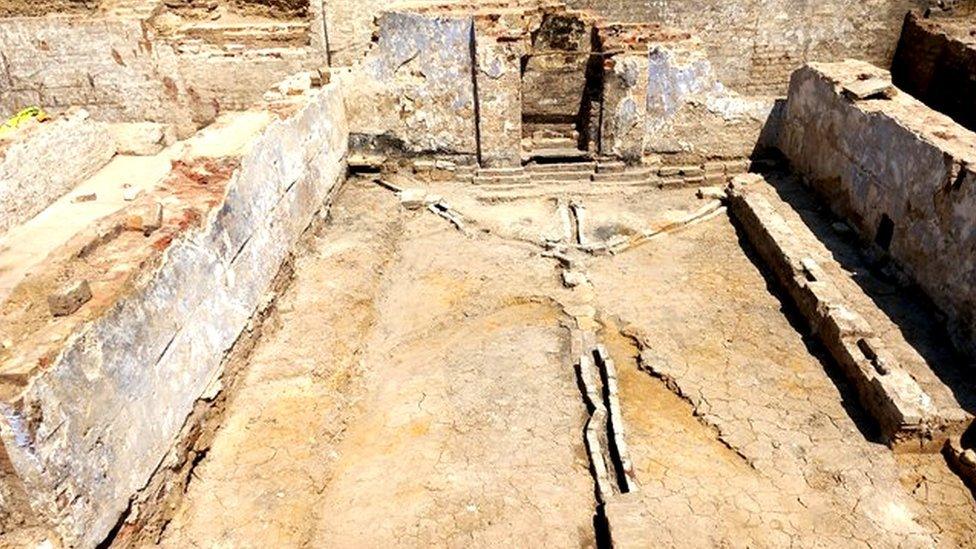Medieval horses had supercars status, research finds
- Published
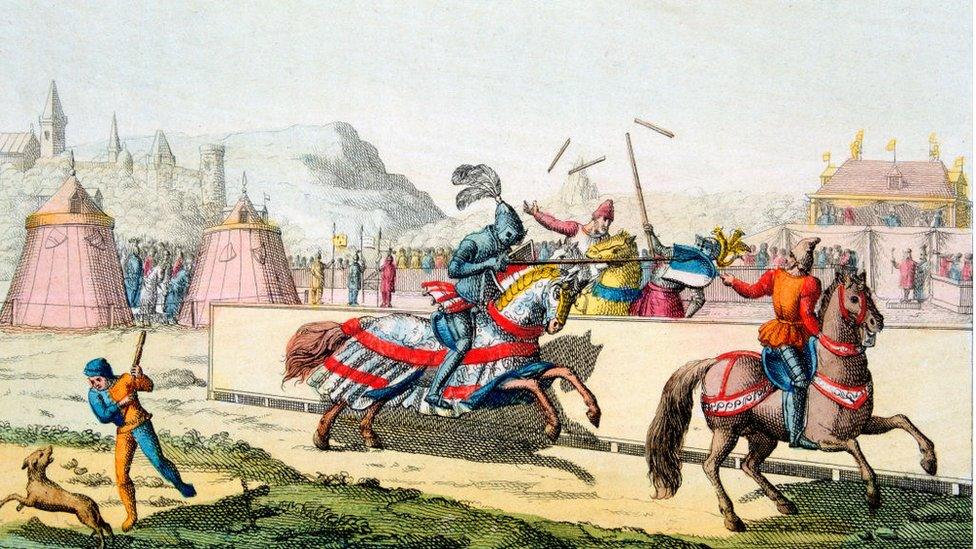
This 1820 artwork shows 12th Century armoured knights jousting at a tournament. The knight on the far side has a shattered lance and is being unhorsed
Archaeological analysis of a medieval animal cemetery has revealed horses that had the status of modern-day supercars.
The remains, discovered in Westminster nearly 30 years ago, include those of physically elite equines that were imported for jousting tournaments.
Scientists at the University of Exeter used the composition of teeth to trace the origins of the horses.
The results show they came from Scandinavia, the Alps, Spain and Italy.
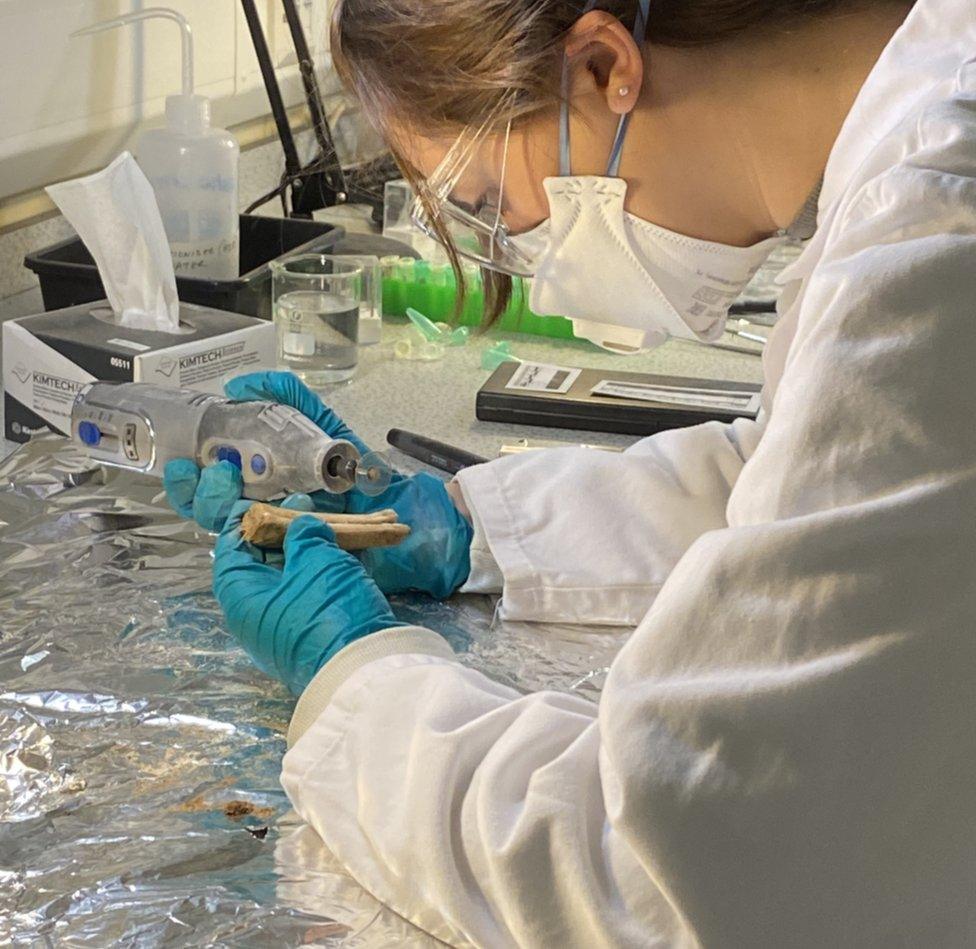
Scientists examined the teeth of horses buried in mediaeval and Tudor times
The animals, sourced from across Europe specifically for their height and strength, were status symbols in the 14th, 15th and 16th Centuries.
Three of the tallest animals known from late medieval England were found in the cemetery.
Although small by modern standards, the horses of 1.6m (or 15.3 hands) would have been impressive for their day, researchers said.
In medieval times, the cemetery would have been located outside the walled City of London but was close to the royal palace complex at Westminster.
The academics believe their work shows the international scale of horse trading in late medieval and Tudor England.
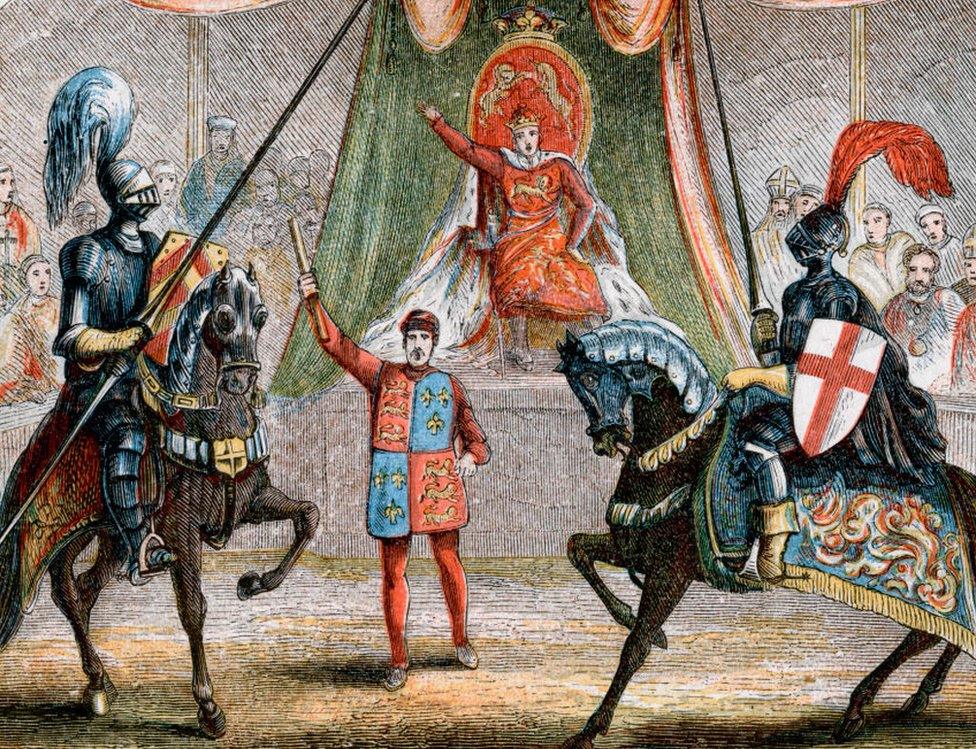
Jousting was known as the sport of kings - this image depicts Richard II stopping the combat between the Dukes of Norfolk and Hereford, 1398

The science
The researchers took 22 molar teeth from 15 individual animals and drilled out portions of the enamel for isotope analysis.
By measuring isotope ratios of the elements strontium, oxygen and carbon present within the teeth and comparing the results with known ranges in different geographies, the team was able to identify the potential origin of each horse - and accurately rule out others, including prime European horse-breeding centres such as Spain and southern Italy.
The results were consistent with the breeding patterns of royal stud farms, where horses would reside until their second or third year, before they would either be broken and trained or sent elsewhere to be sold.
Analysis of the skeletons revealed many of them to be well above average size, with several instances of fused lower thoracic and lumbar vertebrae indicative of a life of riding and hard work.

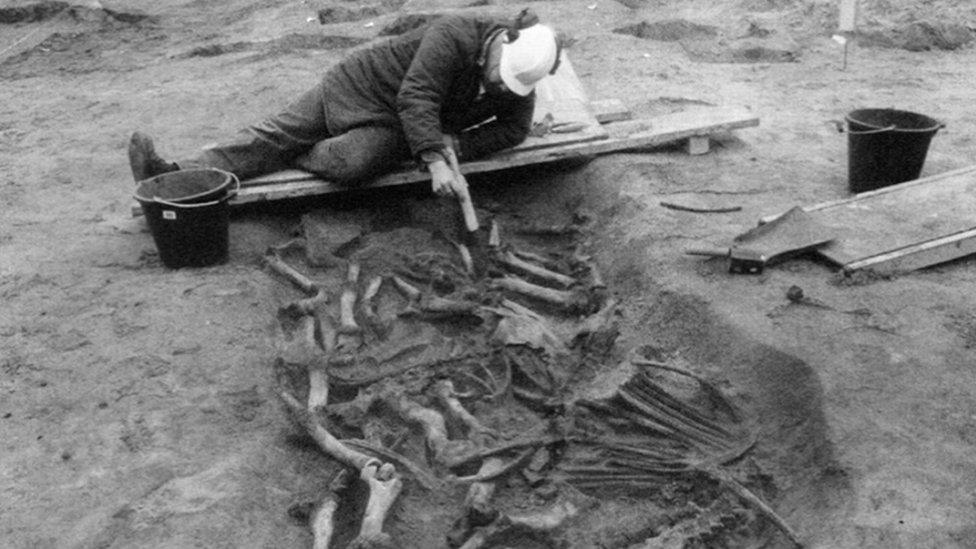
The horse burial pit was found 30 years ago when excavating at Elverton Street, London
Dr Alex Pryor said: "The chemical signatures we measured in the horse's teeth are highly distinctive and very different to anything we would expect to see in a horse that grew up in the UK.
"These results provide direct and unprecedented evidence for a variety of horse movement and trading practices in the Middle Ages.
"Representatives for the king and other medieval London elites were scouring horse trading markets across Europe seeking out the best quality horses they could find and bringing them to London.
"It's quite possible that the horses were ridden in the jousting contests we know were held in Westminster, close to where the horses were buried."
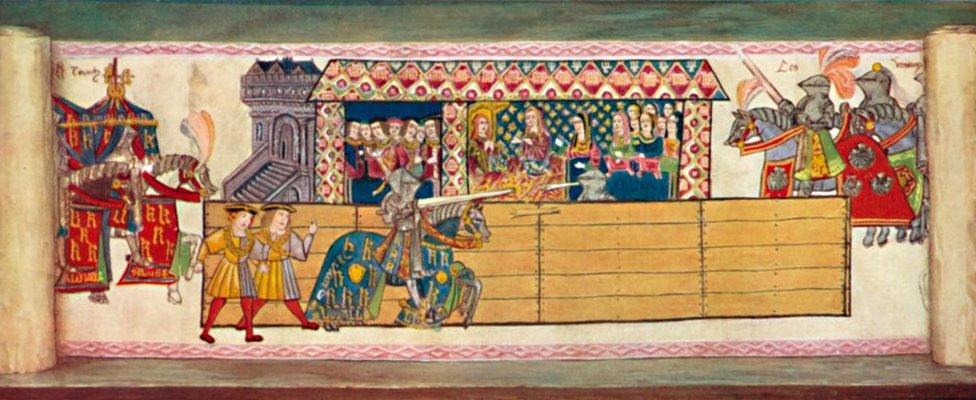
Jousting at Westminster
Prof Oliver Creighton, a medieval specialist at the University of Exeter, said the finest medieval horses were "inordinately expensive and finely tuned vehicles" that proclaimed their owner's status.
"It is apparent that the medieval London elite were explicitly targeting the highest-quality horses they could find at a European scale."

Listen to the best of BBC Radio London on Sounds and follow BBC London on Facebook, external, X, external and Instagram, external. Send your story ideas to hello.bbclondon@bbc.co.uk
- Published5 February 2024
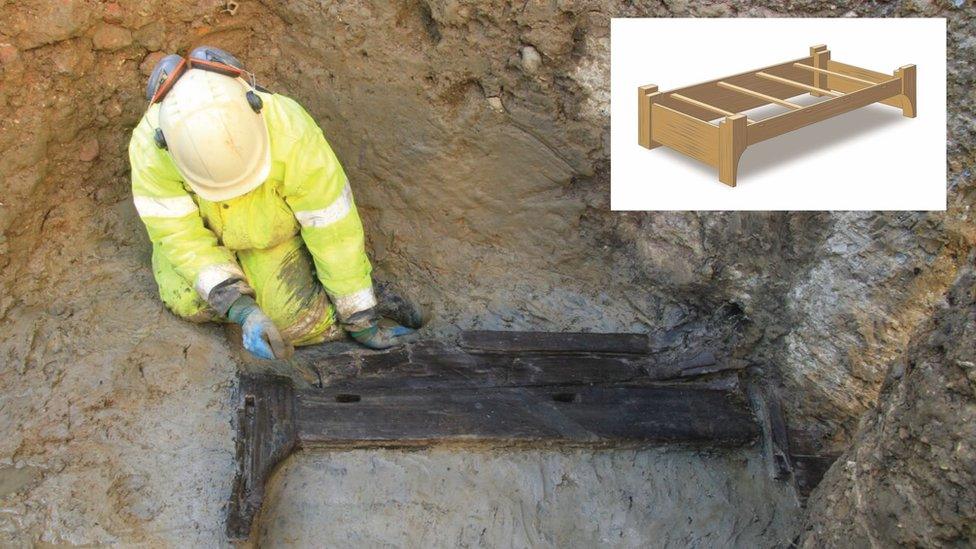
- Published27 January 2024
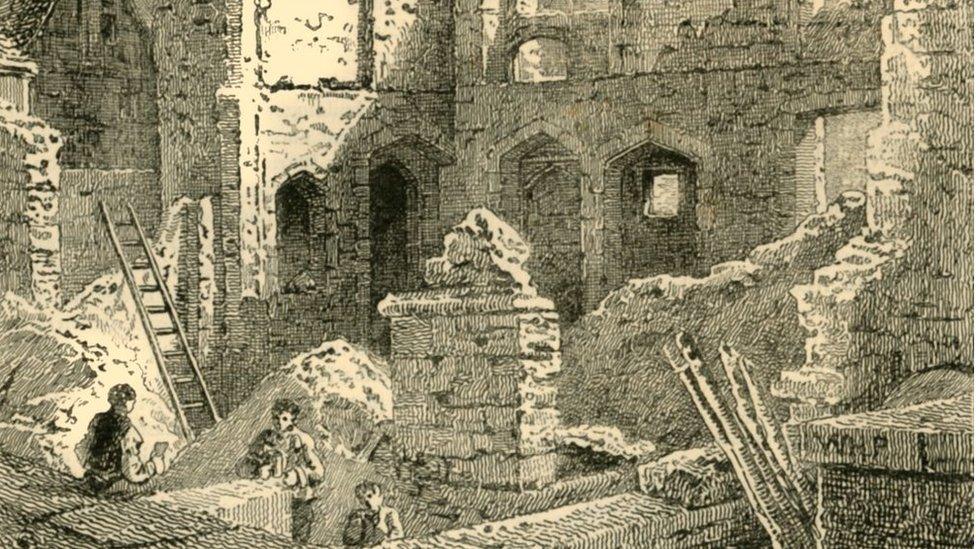
- Published15 November 2023
